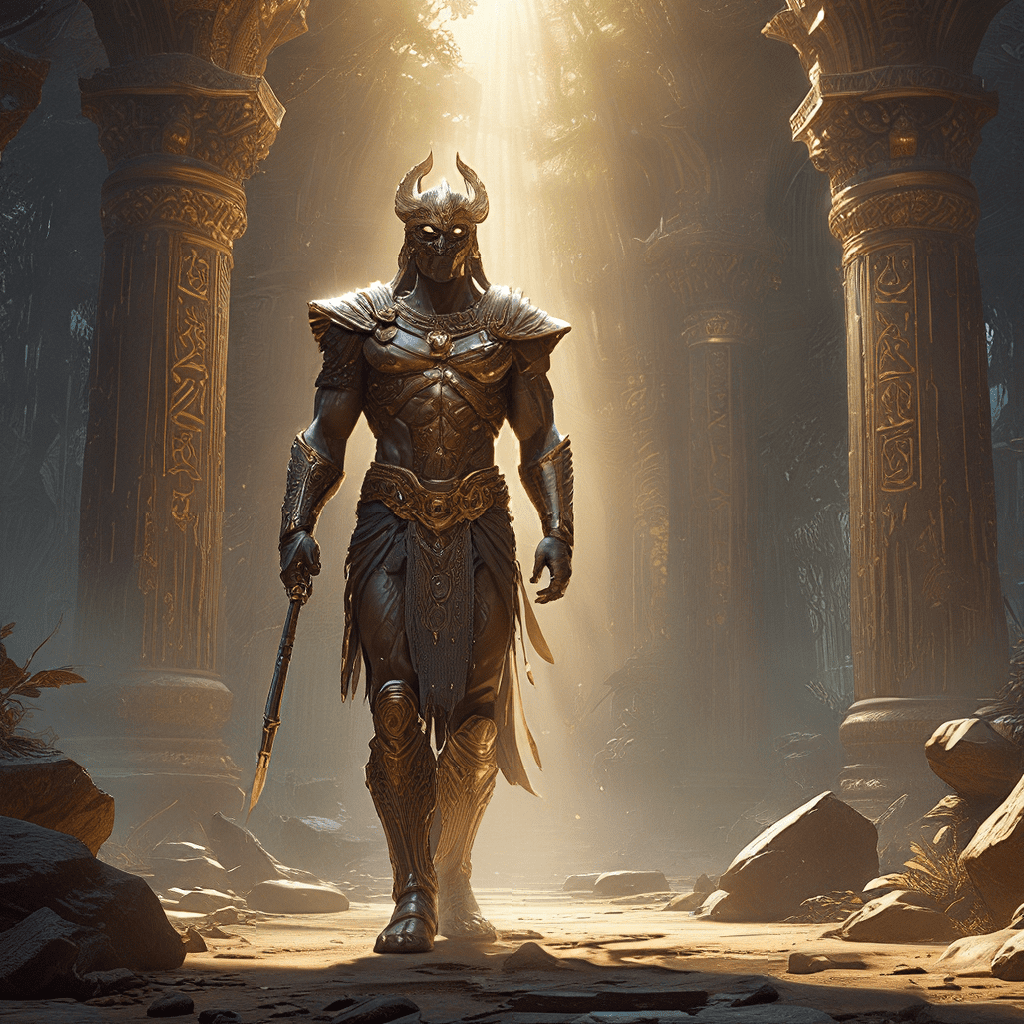Ra: The God of the Afterlife Journey
Ra, the mighty sun god, holds a central position in ancient Egyptian mythology. He is not only the bringer of light and life but also guides souls on their journey to the afterlife. His power and influence permeate every aspect of Egyptian belief, from the creation of the world to the judgment of the dead.
1. Ra’s Origins and Attributes
Ra, the creator god, emerged from the primordial waters, bringing light and order to a chaotic world. As the sun god, he embodies warmth, life, and the very essence of existence. He is often depicted as a falcon-headed man, symbolizing his swiftness and power, with a sun disk atop his head representing his divine nature. Ra is associated with the “Eye of Ra,” a powerful goddess who embodies the sun’s destructive power, capable of both nurture and wrath.
2. Ra’s Daily Journey
Each day, Ra embarks on a celestial voyage across the sky in his solar barque, the “Boat of Millions of Years.” His journey is a symbolic representation of the cycle of day and night. As the sun rises, he brings light and warmth to the world, giving life to all beings. However, his journey is not without trials. Throughout his voyage, Ra confronts darkness and evil forces represented by serpents and demons who seek to extinguish his light. These battles represent the constant struggle between good and evil, and the triumph of light over darkness.
3. Ra’s Role in the Afterlife
Ra’s daily journey across the sky mirrors the soul’s journey through the afterlife. Just as the sun sets and rises again, the soul embarks on a journey through the underworld (Duat) to reach the afterlife. Ra, as the ultimate source of life and light, becomes the judge of the dead. The Egyptians believed that the soul, after death, would face judgment in the Hall of Ma’at. Here, the heart of the deceased was weighed against the feather of Ma’at, a symbol of truth and justice. This process determined the soul’s fate in the afterlife.
4. The Book of the Dead
The “Book of the Dead” is a collection of ancient Egyptian texts that provides detailed information about the afterlife. This text contains spells, prayers, and instructions designed to help the deceased navigate the dangers of the underworld and secure a place in the afterlife. The spells often invoked Ra’s power and guidance, seeking his protection and blessing. These texts offer a glimpse into the Egyptians’ complex beliefs about death, the afterlife, and the role of deities like Ra in guiding souls on their final journey.
5. The Judgment of the Dead
The judgment of the dead was presided over by Anubis, the jackal-headed god of the dead. Anubis, guided by Ra’s wisdom, weighed the heart of the deceased against the feather of Ma’at. If the heart was lighter than the feather, the soul would be granted eternal life in the Field of Reeds, a paradise where the deceased would bask in the eternal light of Ra. However, if the heart was heavier, it indicated that the soul had committed transgressions during life and would be devoured by the demon Ammit, signifying eternal oblivion.
6. Ra and the Creation Myth
Ra’s power and influence extend even to the very creation of the world. According to Egyptian mythology, Ra emerged from the primordial waters, bringing light and order to a chaotic world. His tears are said to have formed the Nile River, vital for life in ancient Egypt. He represents the ultimate source of all creation, the divine force that brought life and order to the universe. His role in creation further reinforces his connection to life, light, and the afterlife, making him one of the most revered and important deities in ancient Egyptian mythology.




